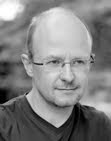Saturday, January 31, 2009
Wednesday, January 21, 2009
Friday, January 16, 2009
Wednesday, January 14, 2009
3d prize!
I was surprised yesterday when I leafed through the recent issue of French magazine Réponses Photo: suddenly I hit upon a double page with three of my own pictures! Apparently I had won 3d prize in the Réponses Photo/Riedisheim/Epson photo competition "Visions d'Europe". I had been completely unaware of it. The prize comes with an Epson R1900 printer and with an opportunity to exhibit at the Semain de Photo, late March, at Riedisheim (Mulhouse). The jury received 150 portfolios, selected 20 photographers for the finals and awarded three prizes. First prize was for Jacques Delplan, another Belgian, and second for Anthony Ceccarelli from France. The jury on the Capitals portfolio: "An elephant in Budapest, a swan in the snows of Bratislava, a lady looking wistfully across the frozen sea at Helsinki. Philippe has travelled through Europe with his panoramic Horizon 220 and brought back a series of mellow and intriguing images, where space and melancholy meet to a create a beautiful atmosphere. A very accomplished, silent road movie ..."
Sunday, January 11, 2009
Old Rome
 Personally I am more interested in the vestiges of classical antiquity than in the Baroque and Renaissance Rome. There's something undefinably weighty and solemn about them. Even in Athens, where more than in Rome the remnants are confined to an archeological archipelago (with the Parthenon in the centre), they dominate the spirit of the city. It's amazing we can still walk around in vestiges of human civilisation of thousands of years ago. And if you think about it, it wasn't that much different from today. Just read the letters of Pliny the Younger and you'll notice that top-level Romans were just as mobile, culturally sophisticated and business-savvy as we are.
Personally I am more interested in the vestiges of classical antiquity than in the Baroque and Renaissance Rome. There's something undefinably weighty and solemn about them. Even in Athens, where more than in Rome the remnants are confined to an archeological archipelago (with the Parthenon in the centre), they dominate the spirit of the city. It's amazing we can still walk around in vestiges of human civilisation of thousands of years ago. And if you think about it, it wasn't that much different from today. Just read the letters of Pliny the Younger and you'll notice that top-level Romans were just as mobile, culturally sophisticated and business-savvy as we are.The Bronica is a very versatile tool: with the iso dial on 800 and the ability to take shots up to 1/10s out of hand, you can shoot inconspicuously in museums. The bad weather makes is a mixed blessing: the light is soft and diffuse and the reflections of rain and puddles creates depth in pictures.
Saturday, January 10, 2009
Urbs Roma

Between Xmas and the new year we went to Rome. Not one of our best outings. It was cold and rainy best part of the time, the city was chock full of people, graffiti and grime everywhere and the B&B in Albano was much further (or longer) from town than anticipated. Nevertheless, we were able to keep a cheerful mood most of the time. After all the city does have some fabulous things on display.
All I took as a camera was the Bronica RF645. Not even the LX-3 in my pocket. Just the Bronica and a good stock of 220 rolls Tri-X 320. One roll yields 32 exposures, almost as if one is shooting 35mm. And it's a nice, compact camera - with just a standard lens - to work with. I wasn't particularly tuned to taking pictures. I took about 200 shots, but honestly without much conviction. Or at least without wanting to make things complicated. I just shot stuff I liked pretty much straight on.
Negs have been developed and I have been surprised by what I see. There is quite a bit that I like. Simple things, nothing out of the ordinary, but to me interesting in a way. The negatives are a little more contrasty than I am used to, which I like. Maybe it's the warm winter light (when the sun was, on rare occasions, out), maybe it's just that the negatives have been slightly underdeveloped (I exposed at 800 iso, but stupidly forgot to notify the lab so they developed at the standard 400 iso). Anyway, there's quite a bit of material I can work with. Together with negatives from previous visits to Rome I can compile a nice portfolio.
It's weird. Often you do your very best only to find that the negs are just right for the bin. In Rome I shot on automatic pilot and the result is more than promising. What's the trick?




